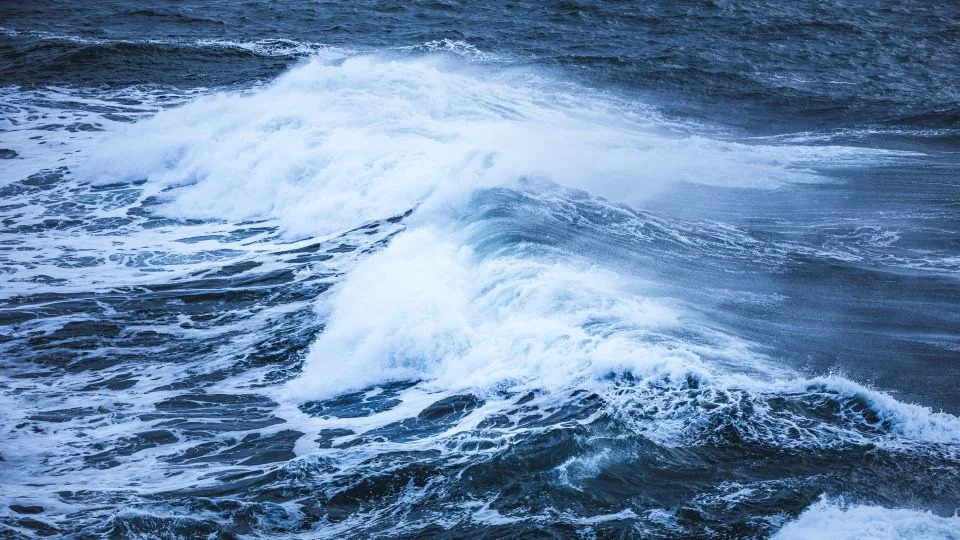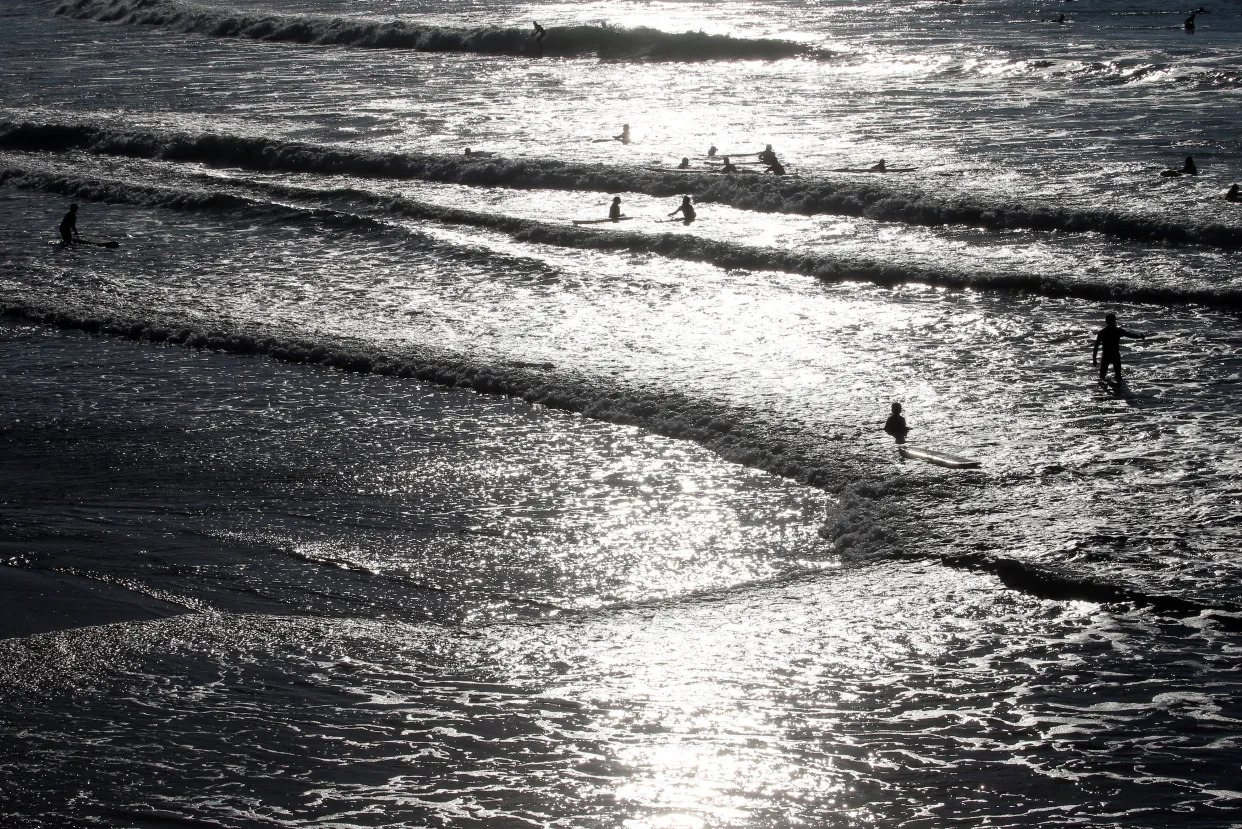Jury awards climate scientist Michael Mann $1 million in defamation lawsuit
SUMAN NAISHADHAM
Thu, February 8, 2024

Michael Mann, then-professor of atmospheric science at Penn State, arrives at the “Before the Flood” premiere on day 2 of the Toronto International Film Festival at the Princess of Wales Theatre on Sept. 9, 2016, in Toronto. A jury on Thursday, Feb. 8, 2024, said Mann was defamed 12 years ago when a pair of conservative writers compared his depictions of global warming to a convicted child molester.
WASHINGTON (AP) — A jury on Thursday awarded $1 million to climate scientist Michael Mann who sued a pair of conservative writers 12 years ago after they compared his depictions of global warming to a convicted child molester.
Mann, a professor of climate science at the University of Pennsylvania, rose to fame for a graph first published in 1998 in the journal Nature that was dubbed the “hockey stick” for its dramatic illustration of a warming planet.
The work brought Mann wide exposure but also many skeptics, including the two writers Mann took to court for comments that he said affected his career and reputation in the U.S. and internationally.
“It feels great,” Mann said Thursday after the six-person jury delivered its verdict. ”It’s a good day for us, it’s a good day for science.”
In 2012, a libertarian think tank named the Competitive Enterprise Institute published a blog post by Rand Simberg, then a fellow at the organization, that compared investigations into Mann’s work to the case of Jerry Sandusky, a former assistant football coach at Penn State University who was convicted of sexually assaulting multiple children. At the time, Mann also worked at Penn State.
Mann’s research was investigated after his and other scientists’ emails were leaked in 2009 in an incident that brought further scrutiny of the “hockey stick” graph, with skeptics claiming Mann manipulated data. Investigations by Penn State and others found no misuse of data by Mann, but his work continued to draw attacks, particularly from conservatives.
“Mann could be said to be the Jerry Sandusky of climate science, except for instead of molesting children, he has molested and tortured data,” Simberg wrote. Another writer, Mark Steyn, later referenced Simberg’s article in his own piece in National Review, calling Mann’s research “fraudulent.”
The jury in Superior Court of the District of Columbia found that Simberg and Steyn made false statements, awarding Mann $1 in compensatory damages from each writer. It awarded punitive damages of $1,000 from Simberg and $1 million from Steyn, after finding that the pair made their statements with “maliciousness, spite, ill will, vengeance or deliberate intent to harm.”
During the trial, Steyn represented himself, but said through his manager Melissa Howes that he would be appealing the $1 million award in punitive damages, saying it would have to face “due process scrutiny.”
Mann argued that he had lost grant funding as a result of the blog posts — an assertion for which both defendants said Mann did not provide sufficient evidence. The writers countered during the trial that Mann instead became one of the world's most well-known climate scientists in the years after their comments.
“We always said that Mann never suffered any actual injury from the statement at issue," Steyn said on Thursday through his manager. "And today, after twelve years, the jury awarded him one dollar in compensatory damages.”
Simberg's attorney Mark DeLaquil said his client was “disappointed in the verdict” and would appeal the jury's decision.
Both writers argued that they were merely stating opinions.
Lyrissa Lidsky, a constitutional law professor at the University of Florida, said it was clear the jurors found that Steyn and Simberg had “recklessly disregarded the falsity of their statements.” She added that the discrepancy between what the jury awarded in compensatory and punitive damages could result in the judge reducing the punitive damages.
Many scientists have followed Mann’s case for years as misinformation about climate change has grown on some social media platforms.
“I hope people think twice before they lie and defame scientists," said Kate Cell of Union of Concerned Scientists. Her work as senior climate campaign manager includes tracking misinformation related to climate change.
“We are so far outside the bounds of a civil conversation about facts that I hope this verdict can help us find our way back,” Cell said.
Alfred Irving, the judge presiding over the case, reminded the jury on Wednesday before they deliberated that their job was not to decide “whether there’s global warming."
Climate change continues to be a divisive and highly partisan issue in the United States. A 2023 poll from The Associated Press-NORC Center for Public Affairs Research found that 91% of Democrats believe climate change is happening, while only 52% of Republicans do.
On Thursday, Mann said he would be appealing a 2021 decision reached in D.C. Superior Court that held National Review and the Competitive Enterprise Institute not liable for defamation in the same incident.
“We think it was wrongly decided,” Mann said. “They're next.”
___
The Associated Press’ climate and environmental coverage receives financial support from multiple private foundations. AP is solely responsible for all content. Find AP’s standards for working with philanthropies, a list of supporters and funded coverage areas at AP.org.
DC jury orders conservative commentator to pay $1M for defaming climate scientist
Thomas Catenacci
Fri, February 9, 2024
A Washington, D.C., jury found conservative commentator Mark Steyn guilty of defaming a prominent climate scientist, ordering him to pay $1 million in punitive damages this week.
In a sprawling verdict delivered on Thursday afternoon after a multiweek trial, the Superior Court of the District of Columbia jury determined that Steyn and fellow commentator Rand Simberg defamed scientist Michael Mann, the creator of the famed "hockey stick" graph, more than a decade ago. The jury additionally ordered Simberg to pay Mann $1,000 in punitive damages, and both he and Steyn were ordered to pay just $1 each to Mann in compensatory damages.
"I hope this verdict sends a message that falsely attacking climate scientists is not protected speech," Mann said in a statement issued after the verdict was delivered late Thursday.
"We consider this a win for the truthful reporting of climate science matters," Mann's lawyer John Williams added in an email to Fox News Digital.
AOC DECLARES VICTORY IN FIGHT FOR GREEN NEW DEAL 5 YEARS LATER: 'SOCIAL AND ECOLOGICAL TRANSFORMATION'

Michael Mann is seen outside the H. Carl Moultrie Courthouse on Feb. 5 in Washington, D.C.
The case dates back to 2012 when Mann first filed his lawsuit against Simberg and Steyn. He argued the pair of commentators defamed him in separate posts in which they compared him to Penn State University assistant football coach Jerry Sandusky, who had recently been convicted of child molestation.
Years earlier, in 1998, Mann, who remains a University of Pennsylvania climate professor, published a study in the journal Nature showing his "hockey stick" grasp, which showed the Earth warming at a rapid pace. The graph was then used worldwide, including in subsequent United Nations climate reports, to prove that global warming was an increasing threat to humanity.
However, critics, like Steyn and Simberg, have repeatedly cast doubt on Mann's graph and underlying data.
Then, in July 2012, Simberg, then a fellow at the free market think tank Competitive Enterprise Institute, published a blog post making the original comparison between Mann and Sandusky.
"Mann could be said to be the Jerry Sandusky of climate science, except for instead of molesting children, he has molested and tortured data," Simberg wrote in the post.

Mark Steyn is seen outside the H. Carl Moultrie Courthouse on Feb. 5 in Washington, D.C.
Steyn published a blog post of his own in National Review three days later, referencing Simberg's article. Though, Steyn appeared to back off Simberg's original comparison in his article.
"I’m not sure I’d have extended that metaphor all the way into the locker room showers with quite the zeal Mr. Simberg does, but he has a point," Steyn wrote at the time.
He further identified Mann as "the man behind the fraudulent climate-change 'hockey-stick' graph, the very ringmaster of the tree-ring circus," in reference to climate science which measures historical temperatures using tree ring analyses.
The jury on Thursday ultimately found that the two commentators' posts were defamatory, asserted or implied a provably false fact, had reckless disregard for whether their statements were false and injured Mann as a result.

A photo of the COP28 logo ahead of the latest United Nations Climate Change Conference in Dubai, United Arab Emirates, on Nov. 30, 2023. The United Nations has heavily relied on Michael Mann's "hockey stick" graph in its reports on climate change.
"I have no difficulty standing on the truth," Steyn said during his opening remarks at the trial last month. "The truth of what I wrote, the truth about what happened at a famous American institution, the truth about this man."
"In my world, I can write something, Mr. Simberg can write something, and Mr. Mann can write something — and you’re free to read all or none, and decide what weight to attach to all or none. But, in Mr Mann’s world, there’s his take — and everyone else has to be hockey-sticked into submission and silence," he continued. "He’s a classic example of the guy who can dish it out but can’t take it."
Melissa Howes, Steyn's manager, told Fox New Digital that the punitive damages would have to "face due process scrutiny under U.S. Supreme Court precedent." She also noted the minimal amount awarded to Mann in compensatory damages.

Mark Steyn, right, argued during the trial that his blog post regarding Michael Mann, left, was protected speech under the First Amendment.
After the verdict was reached, Amy Mitchell, who writes for Steyn's online blog, said it was a loss for the First Amendment.
"Putting aside the monetary damages, the real damage done by this case is to every American who still believes in the First Amendment," Mitchell wrote. "The precedent set today, and as alluded to by Justice Alito when the case was petitioned before the U.S. Supreme Court, means that disagreement and/or criticism of a matter of public policy — the founding principle of this country — is now in doubt. And should you choose to give voice to any dissent, you can brought before a jury, held responsible, and fined."
However, Simberg said in a statement that he was ultimately cleared of defaming Mann for "data manipulation" and highlighted the low amount of damages he was ordered to pay.
"I am pleased that the jury found in my favor on half of the statements at issue in this case, including finding my statement that Dr. Mann engaged in data manipulation was not defamation," Simberg said. "In over a decade of litigation, the sanctions levied against Dr. Mann dwarf the judgment against me."









